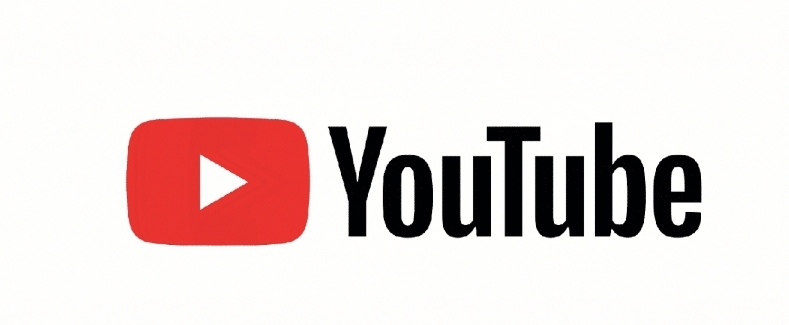YouTube ’s New Timer: A Design-Driven Shift Toward Mindful Digital Experiences
It’s late at night, and you promise yourself — “Just one more short video.” But as minutes slip into hours, the YouTube Shorts feed keeps you glued longer than you intended. You’re not alone. Millions of viewers experience this addictive pull daily, and YouTube has finally stepped in with a new solution — the Shorts Timer.
Launched this October, YouTube’s new Timer feature allows users to set daily limits for Shorts viewing. Once the time is up, playback pauses and a message appears, reminding you to take a break. It’s not just another update — it’s a turning point in YouTube’s broader digital wellbeing strategy, and it has far-reaching implications for user experience, platform trust, and even brand engagement.
The Context: Digital Fatigue Meets Design Accountability
Digital platforms thrive on engagement metrics — watch time, clicks, retention. Yet, this success has a cost: users often find themselves trapped in endless content loops. Research by Statista shows that the average person already spends nearly 50 minutes daily on YouTube, making it one of the world’s most time-consuming apps.
In recent years, regulatory and societal pressure on big tech firms has intensified. In the U.S., more than 2,000 lawsuits target social media’s “addictive design” practices, while Europe’s Digital Services Act requires platforms to actively reduce mental health risks. YouTube’s new timer emerges at this critical juncture — not as a compliance gesture, but as a strategic step toward healthier engagement.

The Feature: How the New Shorts Timer Works
At its core, the Shorts Timer brings intentional friction to the otherwise seamless swipe experience.
- Found under YouTube’s digital wellbeing settings, it allows users to set daily limits for Shorts viewing.
- Once the chosen limit is reached, playback pauses automatically, displaying a reminder to stop scrolling.
- While adults can dismiss the prompt and continue, parental controls are planned for rollout later in 2025. Once active, these will make limits non-dismissible for supervised accounts.
This design evolution blends choice with responsibility — aligning with YouTube’s existing “Take a Break” and “Bedtime Reminder” tools but adding stronger behavioral cues for digital self-regulation.
The CX and EX Connection: From Design Ethics to Experience Leadership
From a customer experience (CX) perspective, this update signals more than a functional tweak — it reflects an ethical evolution of experience design.
Today’s CX leaders face a paradox: how to design engaging experiences that also respect human limits. YouTube’s move demonstrates that introducing positive friction — tiny interruptions that prompt reflection — can actually enhance brand trust and loyalty.
As behavioral psychologist Dr. Fogg notes in his “Behavior Model,” lasting engagement stems not from infinite stimulation but from meaningful, self-controlled interaction. By enabling users to set boundaries, YouTube is building empathy into its user interface — a quality increasingly seen as a competitive differentiator.
Benchmarking the Competition: How Other Platforms Compare
| Platform | Screen-Time Control Features | Level of Enforcement |
|---|---|---|
| YouTube | Shorts Timer, Take a Break, Bedtime Reminder | Optional for adults, mandatory for supervised accounts soon |
| TikTok | Daily screen-time management, passcode-protected teen limits | Enforced defaults for minors |
| Daily limit reminders, Quiet Mode, “Take a Break” nudges | Voluntary, customizable | |
| Apple Screen Time / Google Wellbeing | App-level time caps, downtime scheduling | Device-level enforcement |
Among these, YouTube’s timer stands out for addressing content-specific overuse — not total app time. It’s a precision tool: tackling the addictive swiping behavior unique to Shorts, while preserving broader platform engagement for long-form and educational content.
The Human Factor: Why Timers Resonate With Modern Users
In the age of infinite content, consumers crave balance. The rise of digital wellness apps, from Calm to Forest, shows users actively seek tools that restore control over attention.
A survey by Deloitte found that over 57% of digital consumers appreciate apps that offer time-limit features. For Gen Z, this rises to 64%. This data underscores a broader emotional trend — empowerment through choice.
YouTube’s timer smartly taps into this sentiment. It doesn’t lecture; it nudges. It doesn’t lock down; it invites mindfulness. And in a CX environment where perceived autonomy defines satisfaction, such subtle design psychology becomes gold.
Lessons for CX Practitioners: Designing Mindful Digital Journeys
- Design micro-moments of reflection
Instead of striving for non-stop attention, introduce subtle cues that remind users to pause and reset. It conveys empathy and strengthens long-term engagement. - Align utility with wellbeing
Just as YouTube adds timers for self-control, brands can embed wellness checkpoints — e.g., “Review progress,” “Pause to plan,” or “Celebrate completion” prompts. - Balance freedom with guided choice
Empower users with options, but design default behaviors that reflect ethical engagement. Non-dismissible limits for minors are a good case in point. - Measure engagement quality, not just quantity
Move beyond vanity metrics. Use sentiment tracking, dwell-time quality, and user recovery rates to assess how customers feel about their product time.
Expert Perspective: From Persuasion to Protection
Industry analyst Sarah Golombek, in a 2025 eMarketer column, points out:
“Platforms can’t claim customer obsession while ignoring customer well-being. Protecting attention is now part of the experience promise.”
Her statement captures a critical reality. The boundary between UX design and customer ethics is dissolving. Whether it’s YouTube limiting “doom scrolling,” or Netflix introducing episode-by-episode reminders, the next competitive frontier isn’t just usability — it’s sustainability of interaction.
What This Means for Brands and Marketers
For brands leveraging YouTube as a marketing channel, this update changes outreach strategy subtly but significantly.
- Ad sequencing may need recalibration: Short-form ad creatives must engage users swiftly, knowing timer-driven pauses could interrupt viewing flow.
- Mindful branding becomes valuable: Companies that align messaging with wellness — e.g., “take a breather,” or “pause with purpose” — stand to benefit from the new sentiment landscape.
- CX storytelling evolves: Metrics like attention elasticity (the ability to re-engage after a break) will emerge as key KPIs for campaign design.
In short, marketing must now coexist with mechanisms that protect the user’s attention span, not exploit it.
The Future: From Engagement to Empowerment
Looking ahead, YouTube’s timer could become the foundation of customizable attention design. Imagine adaptive controls — AI-driven timers that respond to viewing patterns, moods, or even biometrics via wearables.
As workplaces grapple with digital burnout and consumers seek healthier online habits, CX and EX professionals alike must view engagement through a wellbeing-first lens. It’s no longer about maximizing clicks — but maximizing meaningful connection.
Actionable Takeaways for CX and EX Leaders
- Embrace humane design: Create experiences that respect cognitive limits while maintaining value and delight.
- Build well-being metrics into CX dashboards alongside NPS or retention scores.
- Educate teams on digital empathy — understanding not just what customers do, but why they disconnect.
- Collaborate across silos: UX, HR, and marketing teams should co-design experiences that promote sustainable engagement for both customers and employees.
Closing Thought
YouTube’s Shorts Timer may seem like a small addition, but it represents a big philosophical shift — from maximizing time-spent to maximizing time well-spent. For CX and EX leaders, this signals the start of a new era where responsible experience design becomes the hallmark of trust, loyalty, and brand excellence.
In a world chasing attention, perhaps it’s time more leaders chose to design for intention.

